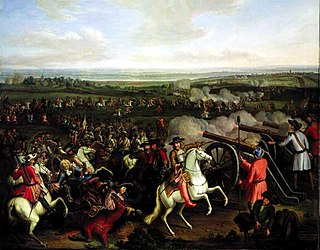
Aargau, more formally the Canton of Aargau, is one of the 26 cantons forming the Swiss Confederation. It is composed of eleven districts and its capital is Aarau.
Swiss German is any of the Alemannic dialects spoken in the German-speaking part of Switzerland, and in some Alpine communities in Northern Italy bordering Switzerland. Occasionally, the Alemannic dialects spoken in other countries are grouped together with Swiss German as well, especially the dialects of Liechtenstein and Austrian Vorarlberg, which are closely associated to Switzerland's.

The canton of Bern, or Berne, is one of the 26 cantons forming the Swiss Confederation. Its capital city, Bern, is also the de facto capital of Switzerland. The bear is the heraldic symbol of the canton, displayed on a red-yellow background.

Jakob Schaffner was a leading Swiss novelist who became a supporter of Nazism.

Léman was the name of a canton of the Helvetic Republic from 1798 to 1803, corresponding to the territory of modern Vaud. A former subject territory of Bern, Vaud had been independent for only four months in 1798 as the Lemanic Republic before it was incorporated into the centralist Helvetic Republic. Léman comprised all of the territory of Vaud detached from Bernese occupation, apart from the Avenches and the Payerne which, after 16 October 1802, were annexed by the canton of Fribourg until the Napoleonic Act of Mediation the following year when they were restored to the newly established and newly sovereign canton of Vaud.
Luciano Castelli is a Swiss painter, graphic artist, photographer, sculptor and musician.

Ars Historica was a genre of humanist historiography in the later Renaissance. It produced a small library of treatises underscoring the stylistic aspects of writing history as a work of art, but also introducing the contributions of philology and textual criticism in its precepts and evaluations.
Christian Francken was a former Jesuit who became an anti-Trinitarian writer.

The Swedish invasion of Brandenburg (1674–75) involved the occupation of the undefended Margraviate of Brandenburg by a Swedish army launched from Swedish Pomerania during the period 26 December 1674 to the end of June 1675. The Swedish invasion sparked the Swedish-Brandenburg War that, following further declarations of war by European powers allied with Brandenburg, expanded into a North European conflict that did not end until 1679.

Weissemburg Abbey, also Wissembourg Abbey, is a former Benedictine abbey in Wissembourg in Alsace, France.
Michael Toxites, born Johann Michael Schütz was a doctor, alchemist and poet of the Holy Roman Empire.

Otto Friedrich Rudolf von Tavel was a Swiss journalist and writer. Many of his novels were written in Bernese rather than Standard German, and he is one of the best-known authors in that language.
Franz Schnabel was a German historian. He wrote about German history, particularly the "cultural crisis" of the 19th century in Germany as well as humanism after the end of the Third Reich. He opposed Nazism during the Second World War.

The Ernestine Gymnasium is a humanistic and modern gymnasium in Gotha, Germany, the successor of the Illustrious Gymnasium, founded in 1524, which in 1853 was merged with the recently founded Real-Gymnasium Ernestinum, named in honour of Ernest I, Duke of Saxe-Coburg and Gotha. The merged school continued to be known as the Ernestinum. Until 1947, when it was closed, it was considered the oldest gymnasium in the German-speaking world. It was re-founded in 1991, shortly after German reunification.
Siegfried Lauterwasser was a German photographer. He was one of the most important representatives of subjective photography and a member of the group fotoform, which was influential in the post-war period.

Curt Glaser was a German Jewish art historian, art critic and collector who was persecuted by the Nazis.

The Königliches Hoftheater in Dresden, Saxony, was a theatre for opera and drama in the royal seat of the Kingdom of Saxony from 1841 and 1869, designed by Gottfried Semper. It was the predecessor of today's Semperoper, and is therefore sometimes called Altes Hoftheater.

The Wasserschloss Steinen is a fortified house in the northern part of the village Steinen in the district Lörrach.
Ulrich Stutz was a Swiss-German jurist and historian and pioneering scholar in the academic study of canon law. He is associated in particular with the theory of the proprietary church (Eigenkirche) and its role in the development of Christianity in medieval Europe.

John Burnaby (1701–1774) was a British diplomat. He was Resident minister to the Swiss cantons.














